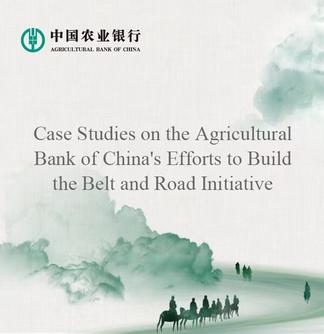A Chinese worker communicates with a Tajik worker at the construction site of the second-phase section of the China-Tajikistan Highway near Kalai Khumb, Tajikistan, on Sept. 11, 2025. The China-Tajikistan Highway -- also known as the Pamir Highway -- was first built in the 1940s. Stretching more than 1,000 km from Dushanbe to Karasu on the China-Tajikistan border, it is vital for Tajikistan's transport and external links.(Xinhua/Li Renzi)
DUSHANBE, Oct. 11 (Xinhua) -- Driving out of Dushanbe, the capital of Tajikistan, one heads southeast through the Danghara Valley, over the Hazrati Shoh mountains, then follows the Surkhob River northward into the Pamir Plateau.
Here the river roars day and night, tumbling between steep cliffs and jagged peaks that loom on both sides.
Mountains cover some 93 percent of Tajikistan's territory, dotted with countless peaks over 6,000 meters. Yet through this formidable terrain runs a single highway. Within a dozen hours, travelers can reach the Karasu border crossing between China and Tajikistan.
Along the route, most mountainsides appear brittle, with little vegetation to hold them in place. Rockslides are common, and road construction here is a herculean task.
Local residents like to say: "The heavens don't give us an easy life." But Chinese builders refused to be daunted.
The China-Tajikistan Highway -- also known as the Pamir Highway -- was first built in the 1940s. Stretching more than 1,000 km from Dushanbe to Karasu on the China-Tajikistan border, it is vital for Tajikistan's transport and external links. Over time, however, natural disasters and neglect left much of the route in disrepair. In 2009, China Road and Bridge Corporation (CRBC) began reconstruction and expansion work.
The first phase of the project was completed in 2013. Tajik President Emomali Rahmon praised the rebuilt highway for improving safety and personally awarded medals to Chinese workers involved. In September 2022, work began on the second phase, tackling the Pamirs' most formidable terrain head-on.
About 255 km east of Danghara lies Kalai Khumb village, known as the gateway to the Pamirs. Villager Kishwar slapped his broad, calloused hand against his waist: "In winter, the snow reaches up to here."
Beyond severe weather, engineers faced treacherous geology: sheer cliffs with dramatic vertical drops, fragile shale formations and frequent landslides and mudflows. At certain points, slopes towered up to 76 meters above the roadbed. Meanwhile, as the only overland artery linking China and Tajikistan, traffic had to flow even as construction continued.
The CRBC team responded with meticulous planning and scientific methods, building two tunnels, 14 bridges, and five galleries to shield the road from falling debris. The roadway was widened from four meters to 12 meters. The two tunnels were key control projects, including a 3,388-meter-long tunnel that took more than two years to complete. President Rahmon, impressed, personally named it the "Tajikistan Tunnel."
Across the Surkhob River, a village on the Afghan side comes into view. Two men on motorcycles inch their way along a perilous dirt track clinging to a cliff, clouds of dust trailing behind them.
"If not for our Chinese friends, our roads would look like theirs," said Naurus, a local employee with the CRBC. "Now, conditions are completely different -- much wider and smoother."
"The second phase of the China-Tajikistan Highway stretches 92.3 km. Once finished next year, driving time will be cut from five hours to just one and a half," said Jiang Shulin, production manager for key sections of the project, at its starting point in Kalai Khumb.
At a roadside inn in the village, truck driver Amir, who has driven this route for five years, shared his relief: "The old road was a nightmare. Now, with the government and Chinese companies building such a good highway, we're truly grateful."
Further along the new highway, a charming courtyard drew the reporter's attention. Branches bowed under the weight of pomegranates, pears and figs, filling the air with sweet fragrance. A giggling three-year-old girl nibbled on a pear as she pushed open the gate, beckoning the visitors inside.
Her father, Kishwar, owns the house and the small shop next door. "I opened this store in 2007. Back then, sending or receiving goods from Dushanbe took three or four days. Now, if I place an order in the morning, it arrives the same evening," he said.
"The value of this road is beyond measure. Everyone is happy with it," he said.
As the reporter prepared to leave, a truck loaded with Chinese-made new energy vehicles rumbled past.
Wang Peiliang, chairman of Qingdao Dingsheng Hongtai Auto Group, said in Dushanbe that Tajikistan's green transition strategy and the strength of Chinese new energy brands, such as GAC Aion, BYD, and Wuling, have led to a surge in Chinese electric vehicles entering the market -- most of them transported via the China-Tajikistan Highway. Today, nearly all of Dushanbe's taxis are new energy vehicles, and both drivers and passengers speak highly of Chinese technology and quality.
As night fell, the headlights of trucks formed glittering lines across the Pamirs -- a testament to the vitality of the Belt and Road Initiative. Once-isolated, the highlands are now linked by a shared vision for the future. The story of China-Tajikistan cooperation continues to unfold.
A vehicle carrying Chinese-brand automobiles travels on the second-phase section of the China-Tajikistan Highway near Kalai Khumb, Tajikistan, on Sept. 11, 2025. The China-Tajikistan Highway -- also known as the Pamir Highway -- was first built in the 1940s. Stretching more than 1,000 km from Dushanbe to Karasu on the China-Tajikistan border, it is vital for Tajikistan's transport and external links.(Xinhua/Li Renzi)
An aerial drone photo shows part of the first-phase section of the China-Tajikistan Highway near Kalai Khumb, Tajikistan, on Sept. 10, 2025. The China-Tajikistan Highway -- also known as the Pamir Highway -- was first built in the 1940s. Stretching more than 1,000 km from Dushanbe to Karasu on the China-Tajikistan border, it is vital for Tajikistan's transport and external links. (Xinhua/Li Renzi)
Excavators operate at the construction site of the second-phase section of the China-Tajikistan Highway near Kalai Khumb, Tajikistan, on Sept. 11, 2025. The China-Tajikistan Highway -- also known as the Pamir Highway -- was first built in the 1940s. Stretching more than 1,000 km from Dushanbe to Karasu on the China-Tajikistan border, it is vital for Tajikistan's transport and external links. (Xinhua/Li Renzi)
An excavator operates at the construction site of the second-phase section of the China-Tajikistan Highway near Kalai Khumb, Tajikistan, on Sept. 11, 2025. The China-Tajikistan Highway -- also known as the Pamir Highway -- was first built in the 1940s. Stretching more than 1,000 km from Dushanbe to Karasu on the China-Tajikistan border, it is vital for Tajikistan's transport and external links. (Xinhua/Li Renzi)
An aerial drone photo shows part of the second-phase section of the China-Tajikistan Highway near Kalai Khumb, Tajikistan, on Sept. 11, 2025. The China-Tajikistan Highway -- also known as the Pamir Highway -- was first built in the 1940s. Stretching more than 1,000 km from Dushanbe to Karasu on the China-Tajikistan border, it is vital for Tajikistan's transport and external links. (Xinhua/Li Renzi)
Workers are on duty at the construction site of the second-phase section of the China-Tajikistan Highway near Kalai Khumb, Tajikistan, on Sept. 11, 2025. The China-Tajikistan Highway -- also known as the Pamir Highway -- was first built in the 1940s. Stretching more than 1,000 km from Dushanbe to Karasu on the China-Tajikistan border, it is vital for Tajikistan's transport and external links. (Xinhua/Li Renzi)
An aerial drone photo shows the field camp of China Road and Bridge Corporation (CRBC) near Kalai Khumb, Tajikistan, on Sept. 11, 2025. The China-Tajikistan Highway -- also known as the Pamir Highway -- was first built in the 1940s. Stretching more than 1,000 km from Dushanbe to Karasu on the China-Tajikistan border, it is vital for Tajikistan's transport and external links. (Xinhua/Li Renzi)
A Tajik worker poses for photos with a helmet at the construction site of the second-phase section of the China-Tajikistan Highway near Kalai Khumb, Tajikistan, on Sept. 11, 2025. The China-Tajikistan Highway -- also known as the Pamir Highway -- was first built in the 1940s. Stretching more than 1,000 km from Dushanbe to Karasu on the China-Tajikistan border, it is vital for Tajikistan's transport and external links. (Xinhua/Li Renzi)
A worker operates at the construction site of the second-phase section of the China-Tajikistan Highway near Kalai Khumb, Tajikistan, on Sept. 11, 2025. The China-Tajikistan Highway -- also known as the Pamir Highway -- was first built in the 1940s. Stretching more than 1,000 km from Dushanbe to Karasu on the China-Tajikistan border, it is vital for Tajikistan's transport and external links. (Xinhua/Li Renzi)
Villager Kishwar speaks during an interview at his home beside the second-phase section of the China-Tajikistan Highway near Kalai Khumb, Tajikistan, on Sept. 11, 2025. The China-Tajikistan Highway -- also known as the Pamir Highway -- was first built in the 1940s. Stretching more than 1,000 km from Dushanbe to Karasu on the China-Tajikistan border, it is vital for Tajikistan's transport and external links. (Xinhua/Li Renzi)




 A single purchase
A single purchase









